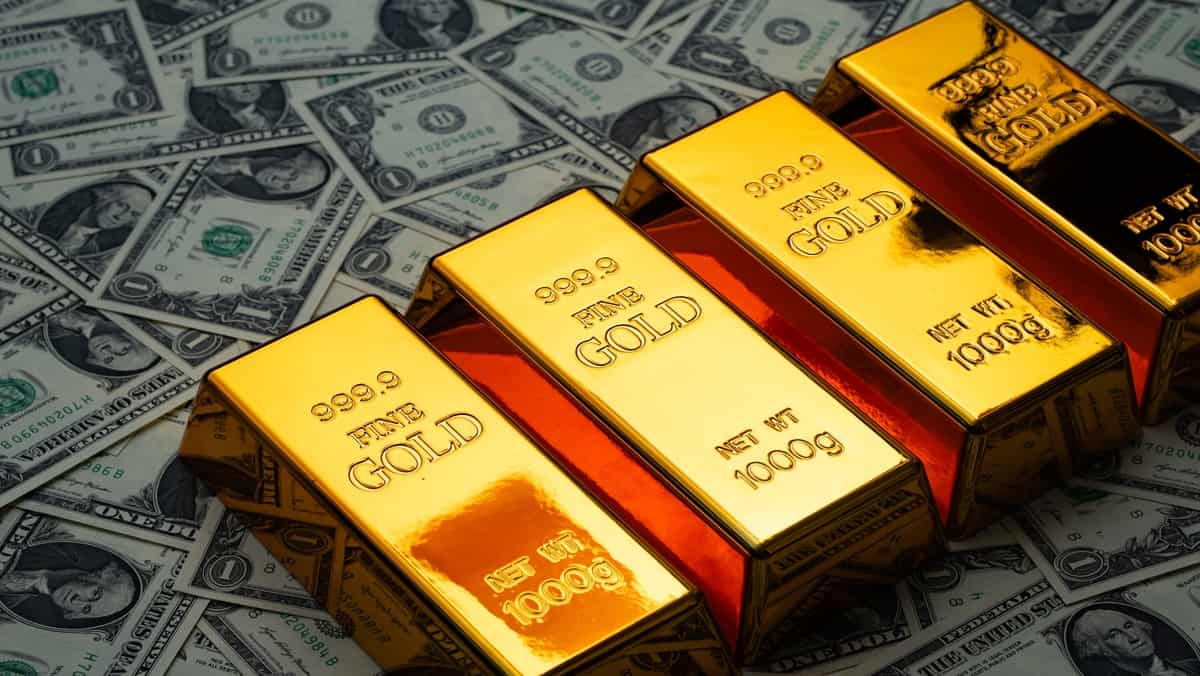
Gold Price Today: gold has long been considered a safe-haven asset, particularly during times of economic uncertainty.
One of the significant factors influencing gold prices is global trade policies, especially tariff changes. This article explores how gold prices react to tariff changes and the broader implications for the market.
Gold is often viewed as a refuge during turbulent economic times. When investors are concerned about market volatility, inflation, or geopolitical tensions, they tend to flock to gold, driving up its price. This behavior is rooted in gold's historical role as a store of value and a hedge against currency fluctuations.
The Role of Tariffs in Economic Stability
Tariffs are taxes imposed on imported goods, and they can significantly impact economic stability. When tariffs are introduced or increased, they can lead to higher prices for consumers and businesses, potentially resulting in inflation. This inflationary pressure often prompts investors to seek out gold as a hedge against declining purchasing power.
The Trump Administration's Tariffs
The recent volatility in gold prices can be traced back to the aggressive tariff policies introduced during the Trump administration. The announcement of new tariffs on Chinese goods led to retaliatory measures from China, which included significant levies on U.S. exports. This escalation in trade tensions heightened fears of a global recession, prompting many to turn to gold as a safe investment.
Market Reactions to Tariff Announcements
When tariffs are announced, the immediate market reaction can be mixed. Initially, gold prices may dip as traders liquidate positions to cover losses in other markets. This phenomenon occurs because many investors sell what they can to raise cash, leading to a temporary decline in gold prices. However, once the dust settles, the long-term outlook for gold often improves as concerns about economic stability resurface.
U.S. Tariffs on Japanese Electronics (1987): The imposition of tariffs on Japanese electronics led to increased economic uncertainty, causing gold prices to rise significantly by the end of the year.
U.S. Tariffs on Steel Imports (2002): Following the introduction of tariffs on steel, gold prices experienced a modest increase as market participants sought refuge from the uncertainty created by trade policies.
U.S. Tariffs on Chinese Solar Panels (2012): The tariffs imposed on solar panels resulted in a brief spike in gold prices, reflecting the market's reaction to the heightened trade tensions.
U.S. Tariffs on European Steel and Aluminum (2018): Similar to previous instances, the tariffs led to increased volatility in the markets, with gold prices rising as investors sought stability amid uncertainty.
Tariffs and Consumer Prices
Tariffs often lead to increased costs for businesses, which are typically passed on to consumers. This rise in prices contributes to inflation, which can erode purchasing power. As inflation expectations rise, demand for gold typically increases, driving up its price. For instance, tariffs on imported oil can lead to higher fuel prices, which in turn raises the cost of goods and services, prompting investors to seek gold as a hedge against inflation.
Gold as an Inflation Hedge
Historically, gold has been viewed as a reliable hedge against inflation. When inflation rises, the real value of currency declines, making gold an attractive alternative for preserving wealth. As tariffs contribute to inflationary pressures, the demand for gold often increases, leading to higher prices.
The Impact of Trade Wars
Trade wars, characterized by escalating tariffs and retaliatory measures, create significant uncertainty in both international trade and domestic markets. This uncertainty can lead to volatility in financial markets, prompting investors to seek safe-haven assets like gold. The ongoing trade tensions between major economies often result in increased demand for gold, as market participants look for stability amid chaos.
The Role of Central Banks
Central banks play a crucial role in the gold market, particularly during times of economic uncertainty. When trade tensions rise, central banks may adjust their monetary policies, including interest rates. Lower interest rates can lead to a weaker currency, which often results in increased demand for gold as an alternative asset. As central banks respond to economic conditions, their actions can significantly influence gold prices.
Monitoring Tariff Developments
As global trade policies continue to evolve, monitoring tariff developments will be essential for understanding their impact on gold prices. Any announcements regarding new tariffs or changes to existing policies can lead to immediate market reactions, influencing gold's trajectory.
Economic Indicators
In addition to tariff changes, various economic indicators will also play a role in shaping gold prices. Factors such as inflation rates, employment data, and GDP growth will provide insights into the overall health of the economy and influence investor sentiment towards gold.
Geopolitical Tensions
Geopolitical tensions can also impact gold prices. Events such as conflicts, elections, or significant policy changes can create uncertainty in the markets, prompting investors to seek refuge in gold. As global dynamics shift, the demand for gold may fluctuate accordingly.
Gold prices are intricately linked to global trade policies, particularly tariff changes. As tariffs can lead to inflation and economic uncertainty, they often drive demand for gold as a safe-haven asset. Understanding the relationship between tariffs and gold prices is crucial for market participants looking to navigate the complexities of the financial landscape. As we move forward, staying informed about tariff developments and economic indicators will be essential for anticipating gold price movements.
When considering shares, indices, forex (foreign exchange) and commodities for trading and price predictions, remember that trading CFDs involves a significant degree of risk and could result in capital loss.
Past performance is not indicative of any future results. This information is provided for informative purposes only and should not be construed to be investment advice.